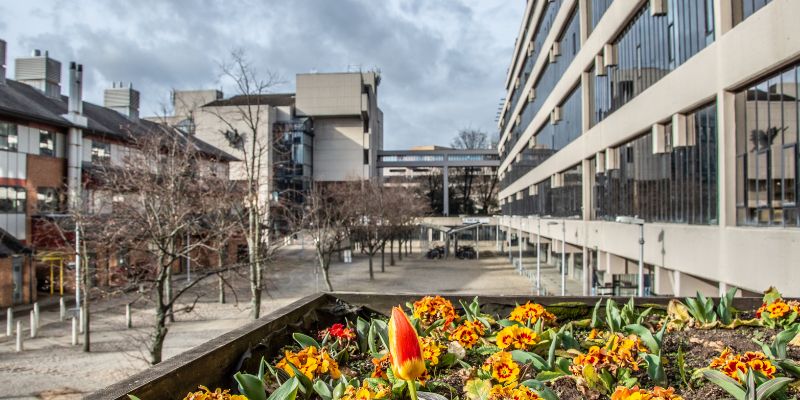By Ann Allen, Director of Campus Innovation & Development, Masud Khokhar, University Librarian and Keeper of the Brotherton Collection, Dr Margaret Korosec, Dean, Online and Digital Education, and Paul Taylor, Dean, Student Education (Experience) and Professor of Chemical Education.
Three years ago, the digital education and experience offered to students by every university was put under the spotlight as the pandemic accelerated a shift to the digital campus for learning and teaching.
With a well-established Digital Education Service, a significant number of academic staff with an international reputation in online innovation, and an embedded culture of collaborative working, Leeds was successful in making that pivot to digitally enabled student education.
Now, after examining what worked, we have been accelerating the digital development of our campus. In April, one of the most exciting digital learning spaces we’ve seen will open its doors. Helix, the digital learning accelerator, will be home to experimentation and creativity to support learning experiences ranging from simple solutions for rapid prototyping in the makerspace, to enabling videography and virtual reality design in state-of-the-art media production suites.

Projects already in plan are truly exciting and innovative: we are developing joint teaching with the University of Pretoria and will use the flexible learning spaces in Helix to engage in a borderless classroom. We will also co-design online materials and facilitate collaborative work between academics and students at both institutions.
For students entering science programmes, instruction can be brought to life by immersion in virtual environments. We can provide virtual labs for them to explore while learning discipline-specific terminology.
A bold approach to learning
Leeds has always encouraged fearless experimentation, and this has been instrumental to the development of Helix and our other digital campus spaces. Research has led to prototypes of café spaces and multi-mode teaching pilots, and insight development has informed hybrid meeting rooms and teaching spaces that are tested via real-time feedback. Putting the user first is our mantra: there is no point in coming up with solutions that no one will use.
Technology remains an enabler rather than a driver for designing learning spaces. By putting pedagogy and user experience at the core of our approach, we can support development that makes a difference to our academics and students in their day-to-day activities.
Our approach helps students to create knowledge as well as to consume it, and to collaborate with each other in different and new ways, on campus or online. Rather than asking them to always ‘attend’, this model ensures their success and belonging.
A new partnership for digital education
Our digital education ecosystem is being created through a new partnership model. This model brings together students, academics, executive and industry experts in student education and campus development, working together to explore possibilities.
This will be implemented in May this year which sees new forms of spaces such as Makerspace in the Edward Boyle Library, which will embed digital literacy and creativity skills. This cross-university collaboration is key, we believe, to thinking differently; challenging each other has been of vital importance.
All of us are aware of the need to keep one step ahead and to remain agile in our thinking: the digital learning space is fast-moving and complex. The results of research through Helix will, we hope, continue to provide innovative solutions as well as opportunities to try, fail and learn. This, alongside our continued collaboration, will keep us on our toes.
Our campus is a place for all of our students, staff and partners. As we look ahead, it is necessary to reimagine what we mean by a ‘campus.’
How do we enable students who spend some or all of their time elsewhere to be part of the community, and how do we enable students who are located primarily on campus to connect with and explore real and virtual worlds beyond its physical boundaries?
We commit to being proactive and intentional as we create our educational spaces that enable students, academics and our extended network of professional services to engage more creatively and flexibly.